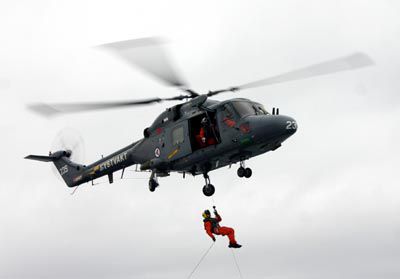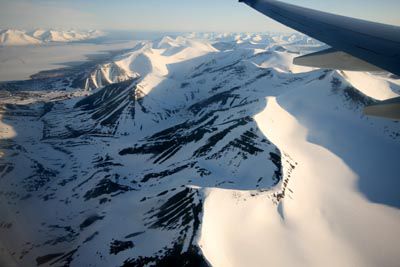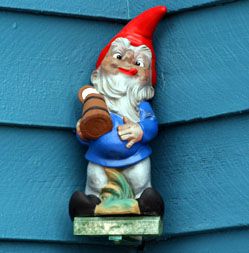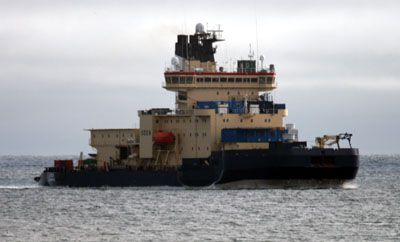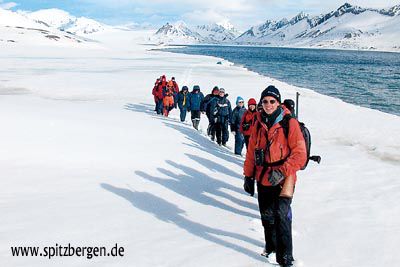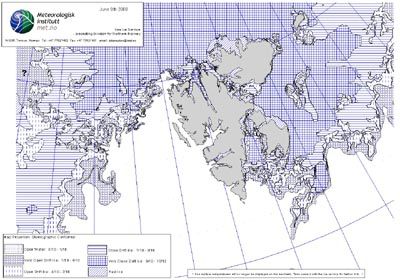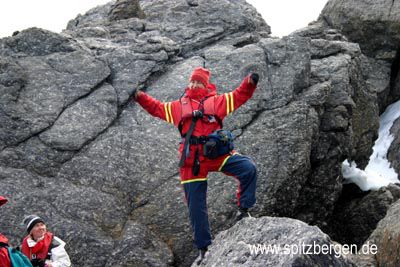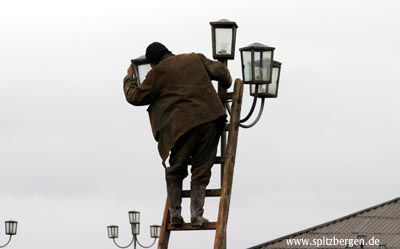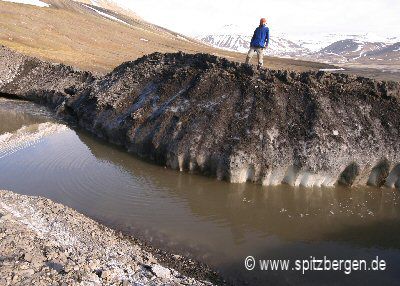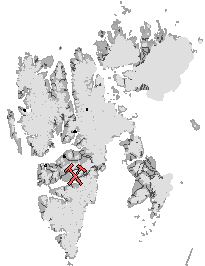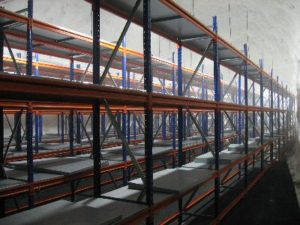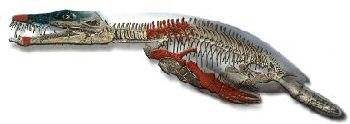-
current
recommendations- Liefdefjord
New page dedicated to one of Spitsbergen's most beautiful fjords. Background information and many photos.
- New Spitsbergen guidebook
The new edition of my Spitsbergen guidebook is out and available now!
- Liefdefjord
New page dedicated to one of Spitsbergen's most beautiful fjords. Background information and many photos.
Page Structure
-
Spitsbergen-News
- Select Month
- May 2025
- April 2025
- March 2025
- February 2025
- January 2025
- December 2024
- November 2024
- October 2024
- September 2024
- August 2024
- July 2024
- June 2024
- May 2024
- April 2024
- March 2024
- February 2024
- January 2024
- December 2023
- November 2023
- October 2023
- September 2023
- August 2023
- July 2023
- June 2023
- May 2023
- April 2023
- March 2023
- February 2023
- January 2023
- December 2022
- November 2022
- October 2022
- September 2022
- August 2022
- July 2022
- June 2022
- May 2022
- April 2022
- March 2022
- February 2022
- January 2022
- December 2021
- November 2021
- October 2021
- September 2021
- August 2021
- July 2021
- June 2021
- May 2021
- April 2021
- March 2021
- February 2021
- January 2021
- December 2020
- November 2020
- October 2020
- September 2020
- August 2020
- July 2020
- June 2020
- May 2020
- April 2020
- March 2020
- February 2020
- January 2020
- December 2019
- November 2019
- October 2019
- September 2019
- August 2019
- July 2019
- June 2019
- May 2019
- April 2019
- March 2019
- February 2019
- January 2019
- December 2018
- November 2018
- October 2018
- September 2018
- August 2018
- July 2018
- June 2018
- May 2018
- April 2018
- March 2018
- February 2018
- January 2018
- December 2017
- November 2017
- October 2017
- September 2017
- August 2017
- July 2017
- June 2017
- May 2017
- April 2017
- March 2017
- February 2017
- January 2017
- December 2016
- November 2016
- October 2016
- September 2016
- August 2016
- July 2016
- June 2016
- May 2016
- April 2016
- March 2016
- February 2016
- January 2016
- December 2015
- November 2015
- October 2015
- September 2015
- August 2015
- July 2015
- June 2015
- May 2015
- April 2015
- March 2015
- February 2015
- January 2015
- December 2014
- November 2014
- October 2014
- September 2014
- August 2014
- July 2014
- June 2014
- May 2014
- April 2014
- March 2014
- February 2014
- January 2014
- December 2013
- November 2013
- October 2013
- September 2013
- August 2013
- July 2013
- June 2013
- May 2013
- April 2013
- March 2013
- February 2013
- January 2013
- December 2012
- November 2012
- October 2012
- September 2012
- August 2012
- July 2012
- June 2012
- May 2012
- April 2012
- March 2012
- February 2012
- January 2012
- December 2011
- November 2011
- October 2011
- September 2011
- August 2011
- May 2011
- April 2011
- March 2011
- February 2011
- January 2011
- December 2010
- November 2010
- September 2010
- August 2010
- July 2010
- June 2010
- May 2010
- April 2010
- March 2010
- February 2010
- November 2009
- October 2009
- August 2009
- July 2009
- June 2009
- May 2009
- April 2009
- March 2009
- February 2009
- January 2009
- December 2008
- November 2008
- October 2008
- August 2008
- July 2008
- June 2008
- May 2008
- April 2008
- March 2008
- February 2008
- April 2000
- Select Month
-
weather information
-
Newsletter

| Guidebook: Spitsbergen-Svalbard |
Home →
Yearly Archives: 2008 − News & Stories
Barentsburg: Russian helicopter flights
A law dispute is becoming a political issue: In 2007, the Russian helicopter company Spark Plus operated several helicopter flights from Kapp Heer (Barentsburg) which were not covered by the licence issued by Norwegian authorities, including flights for Russian scientists and for a film project. According to Norwegian officials, the licence covers only flights between Barentsburg and Longyearbyen and beyond this area only flights directly connected to the activities of the Russian mining company Trust Arktikugol (TA). TA has rejected a fine, now the case will be taken up by a court in Norway. Beyond this, the matter is discussed on a political level. According to the Russians, the Norwegian procedure offends the Spitsbergen Treaty. The Norwegians argue that relevant parts of the treaty concern governmental activities, but not those of companies or private persons. In practice, the situation means a monopoly of the Norwegian helicopter company Airlift in Svalbard.
After mine accidents and other technical problems in Barentsburg, mining will only start again in summer 2009. TA has announced to open a “shopping centre” in Barentsburg and to modernise other infrastructure (hotel, telecommunications etc.).
Norwegian coast guard helicopter near Longyearbyen. According to Norwegian law, only Norwegian aircraft may operate in Norwegian air space, exceptions can be permitted.
Source: Svalbardposten
Coal production in Sveagruva profitable
In 2008, about 2 million tons of coal were mined already until early July, more than 300 000 tons more than expected. This together with rising prices on the world market makes for smiling faces in the management of the Norwegian mining company Store Norske Spitsbergen Kullkompani (SNSK), which is making profit – a rare event in the long history of the company. SNSK expects to have paid its debts back by the end of the year. The coal is exported to Europe, where about 60 % are used in energy production and 40 % in the steel industry.
The area of Svea from above.
Source: Svalbardposten
New station in Ny Ålesund
Ny Ålesund is becoming increasingly popular as a base for polar research. The latest newcomer from the far east, after China and Korea, is India, which opened a station in early 2008. Russia has already expressed interest and may be the next nation to follow. Italy, that has already a station in Ny Ålesund, plans to open a “climate tower” to conduct atmospheric research, which is expected to be operational in the summer of 2009.
The Indian research stations in Ny Ålesund.
The German research stations in Ny Ålesund.
Sources: Svalbardposten, Svalbard Science Forum
Prominent visitors to the ice
Spitsbergen has had a larger number of prominent visitors in June and July. In late June, members of the three Scandinavian royal families went on a cruise into the ice on board the Swedish icebreaker Oden, and ministers of a number of countries visited Longyearbyen and Ny Ålesund to meet colleagues and to discuss issues including climate change. The seed vault near Longyearbyen, opened earlier this year, was also high on the wishlist, but the doors usually remain closed, even for high-ranking visitors such as former US-president Jimmy Carter, who wanted to visit the seed vault in early July together with CNN-chef Ted Turner, multimillionaire George Soros and Google founder Larry Page.
According to the local newspaper Svalbardsposten, 76% of the local population consider prominent visitors unimportant.
The Swedish icebreaker Oden with the Scandiavian Crown Princes on board.
Start of summer season 2008
Early and mid June sees the onset of the arctic “high summer”. The summer tourist has begun, and the first ships have already arrived Longyearbyen. An extraordinary amount of snow has fallen during the past winter and spring; locals say that they have never seen so much snow before. In Longyearbyen at sea level, most of the snow has melted by now (10 June), but in many places, there is still a lot of snow at sea level (which on the other hand is not so uncommon at this season).
The ice situation seems to be “better” than in 2006 or 2007 in that sense that there seems to be more sea ice this year. Northern and eastern parts of the archipelago are still mostly surrounded by drift ice, and it will be interesting to follow the development throughout the summer. In recent years, even the northeasternmost parts of Svalbard were accessible as early as late June/early July.
Snow-rich early summer. Early June, Trygghamna.
Ice chart as of 09 Juni 2008 (© Norwegian Meteorological Institute)
Hurray! Start of season soon!
The PCB-project is making progress
In 2007, concentrations of the long-lived environmental toxin PCBs higher than expected have been found in and near the settlements in Spitsbergen. Building materials (paint, concrete) and electrical parts seem to be major sources. The highest values were found in the Russian settlements of Barentsburg and Pyramiden. PCBs from these local sources have already been found in the bottom sediments in the near-by fjords.
Both Russian and Norwegian authorities have apparently already made some progress in removing the dangerous materials. Almost 1000 electrical parts (condensators from lighting installations) have already been removed, and another 2000 is to follow as soon as replacement parts have arrived. These are said to be on the way already. It is also announced that in Pyramiden, which was abandoned in 1998, all relevant parts will soon be completely removed.
All contaminated materials will be shipped to Longyearbyen and from there to the mainland for disposal in Finland as part of the general Norwegian garbage management system.
In the Norwegian settlements and stations (Isfjord Radio, Longyearbyen, Ny Ålesund and Sveagruva), samples were taken from soil, paint and other materials to identify PCB sources. Known sources have already been removed. The aim is to remove all materials containing PCBs within a short time frame.
Lighting in Barentsburg.
Source: Sysselmannen
Permafrost on Mars
The news of the successful landing of the NASA spacecraft “Phoenix” on Mars on 25 May 2008 went around the world. Now, images have been published that show surface structures that resemble frost patterned ground which is common in the Arctic. The stone rings shown in the NASA images are not permafrost structures: their development does not require permafrost, but frequent and strong freezing and thawing. But more importantly, they require water/ice for their formation.
The NASA images.
Stone rings in Spitsbergen (Woodfjord).
Source: NASA
Van Mijenfjord – Sveagruva – Lunckefjellet
Van Mijenfjord is the shipping route to the Norwegian mining settlement of Sveagruva. It is mostly blocked by the long, narrow island of Akseløya, which increases the local fjord ice development significantly. Recently, Norway’s strongest icebreaker, KV “Svalbard”, had to give up breaking the ice to Sveagruva in a distance of 10-12 kilometres to the settlement. The thickness of the ice was near one metre, and one out of four main engines of the vessel was not working. Following behind KV “Svalbard” was a cargo vessel with supplies and equipment for the mine. These had to be unloaded in Longyearbyen and taken to Sveagruva on the ground with bulldozers and by air.
KV “Svalbard” had already broken a lead through most of the length of the fjord. Because of its unique geography (blocked by the above-mentioned island) and in the light of recent climate changes, the fjord is the only one on the west coast of Spitsbergen where regular local ice formation is likely to occur for some time in the future. Fjord ice is an important habitat for arctic wildlife species such as seals who give birth to their offspring on fjor ice and for Polar bears as hunting ground and so on.
Breaking the ice in Van Mijenfjord regularly is thus criticised by environmental organisations. It is one of the reasons why many are sceptical to the plans of the SNSK (Norwegian mining company) to establish a new coal mine at Lunckefjellet north of Sveagruva. Another reason is the large amount of carbon that is stored in the ground in shape of coal, which would be released to the atmosphere in case of mining and subsequent burning.
SNSK argues that their coal is more environmentally friendly than other coal on the world market due to its low methane content. During mining of one ton in Svea, only 0,9 m3 of methane are released to the atmosphere in contrast to 20-40 m3 as the global average, according to SNSK.
Another argument used against the plans for a new mine is the position very close to the boundaries of the Nordenskiöld Land National Park (partly even inside). Regulations for protected areas in Spitsbergen are very strict.
SNSK plans to open the new mine in 2013.
Fjord ice in Van Mijenfjord i April.
Environment: New pollutants / Rising values of atmospheric CO2
It is well known that environmental pollutants such as PCBs that originate from industrialized countries accumulate in the food chain in the Arctic to high levels in species such as Polar bears and Glaucous gulls, both top predators in this environments. Trends in “old” toxins have been observed to be decreasing in recent years, due to bans of relevant substances for example in the EU. It takes a long time for levels to decrease because all relevant substances have in common that they are long-lived, they are still used illegally and some countries have so far failed to issue bans.
The bad news is that new organic pollutants have been found. Production of chemicals for fireproof materials (electronics, furniture, clothing) seems to be the most significant source. Perfluorooctanesulfonic acid (PFOS) seems to be an important new threat; this substance has already reached high levels for example in fat tissue of Polar bears in Svalbard.
Also regional CO2 levels continue to show alarming trends. CO2 is mixing quickly in the atmosphere over the globe, which means that regional trends reflect the global development. The atmospheric observatory on Zeppelinfjellet near Ny Ålesund in Spitsbergen, the average for the first 100 days of 2008 was 391.1 ppm (parts per million), as compared to 388.8 ppm for the same period in 2007. Single measurements beyond 400 ppm are likely to be observed in 2009.
Thawing ice of a pingo in Spitsbergen. Natural part of the complex life cycle of such a permafrost structure. Or result of man-made climate change.
Thawing ice of a pingo in Spitsbergen. Natural part of the complex life cycle of such a permafrost structure. Or result of man-made climate change.
Source: Svalbard Science Forum
Accidents in Barentsburg
In recent weeks, the Russian mining settlement of Barentsburg has suffered from several accidents. Three persons died during a helicopter crash at Kapp Heer, the helicopter base near Barentsburg, The aircraft collided with a building during a landing attempt in bad visibility conditions. On Thursday, 17 April, Barentsburg reported fire in the coal mine. One miner was found dead a while later, while a second one is still missing.
There are still 500 people living in Barentsburg.
New laws for tourism in protected areas
New regulations for the growing tourist traffic in Svalbard’s national parks and nature reserves have been in process for a while. In March 2008, the governor (Sysselmannen) has published some details, including:
- Ban on crude oil (common fuel for larger ships) in national parks and nature reserves. There may be exceptions for Kongsfjord (Ny Ålesund), the sailing route into Bellsund (Sveagruva) and Magdalenefjord (important destination for large cruise ships).
- Certain sites that are considered to have major historical or biological value and that considered are especially vulnerable will be closed for visitors.
- Additionally, tourist landings in the nature reserves in eastern Svalbard will be restricted to certain areas.
Legislation is in process, a time schedule is not published.
The Haudegen station from World War II in Rijpfjord (Nordaustland) is amongst the sites that are likely to be closed to visitors.
Development of tourism in Spitsbergen
There were 86 097 overnight stays in hotels and guesthouses in Spitsbergen in 2007 (2006: 83 049, 1998: 46 201). The numbers have been constantly growing except from a minor decrease in 2003. Most guests were Norwegians (ca. 68 %), followed by Swedes and Germans (both near 5 %), Britons, Danes, Frenchmen and Dutch.
Numbers show pronouced peaks during the main seasons in March/April and during the summer (late June-August). The local tourism industry aims for better use of their capacities during the off-season including the polar night.
The large percentage of Spitsbergen tourists who come on board major cruise ships and do not stay overnight in any hotel is not included in the numbers above.
The “Nordpol Hotellet” in Ny Ålesund.
Source: Svalbardposten 11/2008.
Plans about new coal mine
SNSK (Store Norske Spitsbergen Kullkompani, the Norwegian mining company) has announced to open a new coal mine at Lunckefjellet in 2013. Lunckefjellet is between Sveagruva and Reindalen in Nordenskiöld Land. Lunckefjellet is supposed to have exploitable coal seams with a thickness of around 2 metres, totalling to approximately 10 million tons.
Exploration drillings have also been carried out recently in Colesdalen (southwest of Longyearbyen), although without economically significant results so far. Plans for further investigations in Nathorst Land (between Van Mijenfjord and Van Keulenfjord) have been announced.
2007 was the most productive year in SNSK’s history until now. More than 4 million tons of coal have been mined in Sveagruva (near-by Sentralfeltet, to be accurate); in addition come almost 80,000 tons from gruve 7 near Longyearbyen. In 2006, the production was 3,6 million tons, 70 % of which were sold to Germany (main customers: Eon (electricity) and steel production).
The project is not undisputed. Criticism includes interference with the untouched environment: amongst others, the mine requires a road to be built across a glacier. Also, environmentalists accuse the Norwegian government to apply different standards to the state-owned SNSK than is generally communicated to the international public. Oslo promotes climate-friendly procedures both for the mainland and for Svalbard.
The position of the envisaged mine at Lunckefjellet.
For more information, see: Store Norske Spitsbergen Kullkompani (newsletter “bedriftsnytt”)
Seed vault officially opened
On 26 February the new seed vault or “Doomsday Vault” as it is often called by the press was officially opened. Located near Longyearbyen, it is supposed to be able to survive global catastrophes including nuclear wars, direct missile attacks and extreme climate change. The purpose is to store seeds of agricultural plants to preserve their diversity for future generations in times of massive loss of biodiversity that we currently experience. The seed vault is Spitsbergen’s biggest media issue since the Italia-catastrophe in 1928.
Entrance to the seed vault.
Deep in the mountain: the seed vault.
© both photos: Mari Tefre/Global Crop Diversity.
For more information, see: Global Crop Diversity Trust
Spectacular finds of dinosaur skeleton remains in the Isfjord area
Parts of dinosaur bones from Isfjord have been known since the early 20th century, but things really started to happen when Norwegian palaentologists found remains of no less than 28 individual marine reptiles near Diabasodden (Tempelfjord in Isfjord), dating to the Jurassic (about 150 million years old). Most of them are Ichthyosaurs that looked more or less similar to dolphins, others are Plesioraurs, larger predative reptiles. One Pliosaur (subgroup of Plesiosaurs) must have been 15 metres long and is thus the largest of its kind that has been found so far, as has recently been announced.
Skeleton of the “monster”, as the 15 m large Pliosaur is inofficially called. Only the red parts have been found.
Pliosaur having breakfast, as “seen” by an artist.
Field work at Knorringfjellet.
News-Listing live generated at 2025/May/04 at 11:24:26 Uhr (GMT+1)
